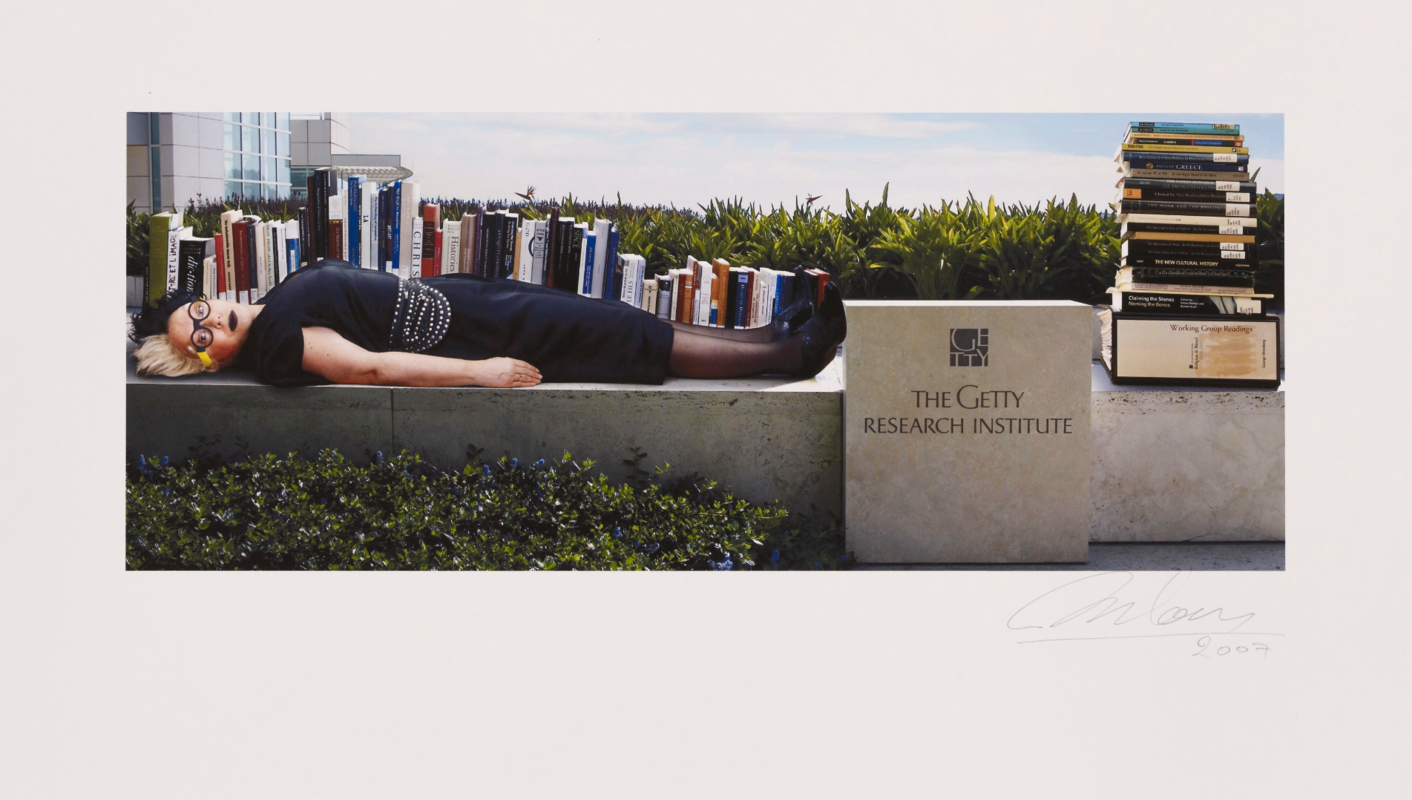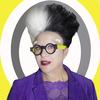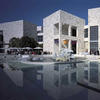More about Untitled

Contributor
ORLAN's Untitled is a photograph of the artist lying on a stone wall next to the Getty Research Institute, with books stacked horizontally at her feet and vertically behind her.
She is making a pun on the "body of work" idea, that a work becomes detached, like Frankenstein, from the body of the artist, or mad scientist. There is ORLAN, there is the body of ORLAN, and there is the body of ORLAN works, and they may not all live in the same house. The Getty gives One Orlan Body of Books as the alternate, group title, spelling her name without its trademark ALLCAPS. Another ALLCAPS artist is VALIE EXPORT, who, with Gina Pane, is studied with ORLAN by the scholar Kelly Voss. For Voss, ORLAN "deconstructs ideals of feminine beauty in the Western canon of art history." But, as you can see in Untitled, any "deconstruction" is a small part of ORLAN's construction of her own personal mythology.
ORLAN's best-known medium is her body itself, which she presents here as a bookend. With the help of some surgeons, she has sliced and diced, reconfigured and artificially reconstructed her body, in order to emulate "mythic female figures who personify feminist values." Her work is also based on a serious, philosophical attitude, which gives her no time at all for the horrified responses of her audience to a video of a surgeon severing her ear, upstaging van Gogh a century later.
If you were a slave in the U.S., there were harsh penalties for knowing how to read. This alone, and the fact that the punishment of slaves for reading was a common practice a few generations ago, could make you recognize that reading is truly, literally, a kind of magic. You can't write well without reading well. You might say, "but Shoshone, ORLAN is from France," and I might say, "France is built on slave labor, too." ORLAN's work makes us ask questions and have discussions. It may not accomplish anything to say "this work is actually about literacy," or books, or lying down at the Getty Institute. The opaque nature of the work makes us circle back to look at it again, uncertain if any allegory can "explain" it, if it were ever in need of an explanation.
ORLAN's great accomplishment is that she does not teach us how to read her work, which makes it possible to draw contradictory, and correct, simultaneous conclusions about it.
Sources
- Davis, Kathy. Dubious Equalities and Embodied Differences: Cultural Studies on Cosmetic Surgery. New York: Rowman & Littlefield, 2003.
- Meyers, Diana T. Gender in the Mirror: Cultural Imagery and Women's Agency. Oxford: OUP, 2002.
- Voss, Kelly. Valie Export, Gina Pane, and ORLAN: Pain, Body Art, and the Question of the Feminine. Cincinnati: University of Cincinnati, 2014.











